En raison de limitations techniques, la typographie souhaitable du titre, «
Annexe : Limite en zéro : approche expérimentale
Limites d'une fonction/Annexe/Limite en zéro : approche expérimentale », n'a pu être restituée correctement ci-dessus.
Soit la fonction ƒ définie sur  par pour tout
par pour tout 
1. Remplir le tableau suivant :

2. Si ƒ(x) s'approche de plus en plus près d'une valeur L quand x s'approche de zéro, on dit que ƒ tend vers L quand x tend vers zéro, ou que ƒ a pour limite L en zéro. Cela se note 
Quel est un bon candidat pour  dans notre exemple ?
dans notre exemple ?
Solution
1. Remplir le tableau suivant :

2. On peut conjecturer que, dans notre cas, 
On pourrait croire que calculer la limite en zéro revient à remplacer x par 0 dans la formule qui donne  , c'est-à-dire calculer
, c'est-à-dire calculer  .
.
Mais le problème de la limite d'une fonction en zéro se pose surtout lorsque cette fonction est bien définie « autour » de zéro par une formule algébrique, mais que cette formule n’est pas valable pour  .
.
Soit la fonction ƒ définie par, pour 
1. Expliquer pourquoi ƒ n’est pas définie en 0.
2. Tracer la courbe de ƒ.
3. Remplir le tableau suivant :

Quel est un bon candidat pour  dans notre exemple ?
dans notre exemple ?
Solution
1. On ne peut pas diviser par 0 car x est au dénominateur.
2. 
3.


Trouver  dans les 3 cas suivants par expérimentation sur la calculatrice.
dans les 3 cas suivants par expérimentation sur la calculatrice.
1. 

2. 

3. 

Solution
1. 
2. 
3. 


























